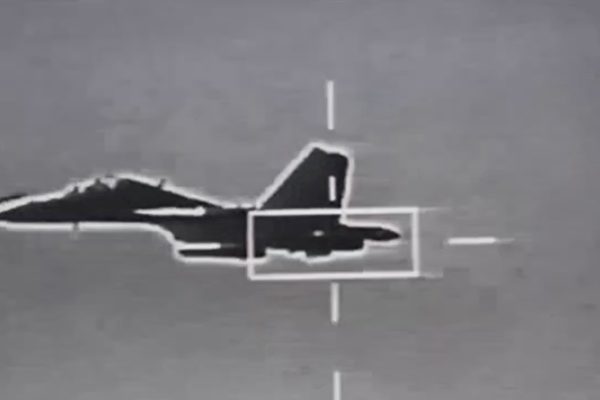During the military exercise of the People’s Liberation Army, the Republic of China Air Force revealed the monitoring screen of F-16V through the AN/AAQ-33 “Sniper Advanced Targeting Pod”, displaying not only its surveillance capabilities but also potentially achieving silent kill effectiveness as analysts suggest that due to its passive detection characteristics, it is reasonable to assume that the enemy aircraft may be completely unaware of being tracked and locked on.
Just three days after President Lai Ching-te took office on May 20, the PLA announced the conclusion of the two-day “Operation Sword 2024A” exercise aimed at Taiwan, in response to the PLA’s military exercises around Taiwan. The Taiwan Army, Navy, and Air Force were on full alert. On the 24th, the Ministry of National Defense of the Republic of China released photos of the F-16V (Block 20) carrying AIM-120 advanced medium-range air-to-air missiles (referred to as missiles in Taiwan) for conducting airborne combat air patrol (CAP) missions, as well as Air Force P-3C anti-submarine aircraft performing maritime surveillance missions.
According to reports from the Central News Agency, during the PLA military exercises, the Republic of China Air Force revealed the F-16V (blk20) monitoring screens of the PLA’s J-16 and H-6 aircraft through the AN/AAQ-33 “Sniper Advanced Targeting Pod”, continuously targeting the enemy aircraft during movement. Although the military has masked and cropped important parameters, the strong surveillance capabilities have been demonstrated.
In 2018, the United States officially sold 18 AN/AAQ-33 targeting pods to Taiwan, greatly enhancing the F-16V’s day and night ground attack capabilities, enabling precise long-range targeting of targets, and transmitting high-quality images back to the command center, capable of detecting ground targets at altitudes of up to 15,000 meters. The accuracy is ten times that of the Air Force’s current LANTIRN pods, with a detection range five times longer, significantly increasing the kill rate. The pods have been fully equipped on US military F-15, F-16, F-18 fighter jets, as well as B-1 and B-52 bombers.
Defense scholars from the National Defense Department’s think tank and the National Defense Academy, Shu Xiaohuang, pointed out in an interview with the Central News Agency that the main mission of the AN/AAQ-33 is air-to-ground. Although there were doubts about its ability to guide air-to-air missiles, NATO verification in 2018 confirmed its ability to track air targets.
Furthermore, the AN/AAQ-33 is a passive reconnaissance system that does not emit signals. Based on the images released by the Air Force, the F-16V is positioned behind the enemy aircraft, leading to a reasonable assumption that the enemy aircraft may be unaware of being tracked and locked on. By launching AIM-9X Sidewinder missiles at the appropriate distance, a significant tactical advantage can be achieved, but the military has masked parameters such as altitude, speed, enemy position, making it difficult to determine the tracking range and distance.
Scholar from the National Defense Academy, Su Ziyun, also mentioned that compared to LANTIRN, the AN/AAQ-33 combines search and targeting functions, with a dual-optic (visible light, non-visible light) detection range of approximately 87 kilometers for air-to-ground and up to 187 kilometers for air-to-air combat. This means that from the airspace above the island, enemy aircraft can be targeted remotely through the electro-optical system without triggering radar warning systems. The enemy aircraft may not even be aware of being locked on, achieving the effectiveness of silent killing.
In terms of propaganda, Shu Xiaohuang believes that the PLA’s military exercise against Taiwan this time is more about “politics trumping military,” mainly aimed at intimidating Taiwan. However, through this image, the national military not only demonstrates “I see you, I firmly hold onto you, and I can strike you at any time,” but also strengthens deterrence against the enemy and showcases national defense capabilities to the public, encompassing technological, tactical, strategic, and political significance.

